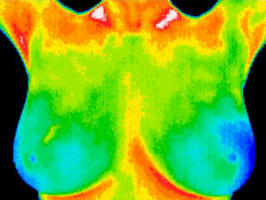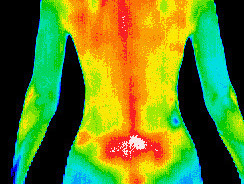
Medical Thermograms - Digital Infrared Thermal Imaging (DITI)
Medical DITI is a noninvasive adjunctive diagnostic technique that allows the examiner to visualise and quantify changes in skin surface temperature. An infrared scanning device is used to convert
infrared radiation emitted from the skin surface into electrical impulses that are visualised in colour on a monitor. This visual image graphically maps the body temperature and is referred to as a
thermogram. The spectrum of colours indicate an increase or decrease in the amount of infrared radiation being emitted from the body surface. Since there is a high degree of thermal symmetry in the
normal body, subtle abnormal temperature asymmetry's can be easily identified.
Medical DITI's major clinical value is in its high sensitivity to pathology in the vascular, muscular, neural and skeletal systems and as such can contribute to the pathogenesis and diagnosis made by
the clinician.
Medical DITI has been used extensively in human medicine in the U.S.A., Europe and Asia for the past 20 years. Until now, cumbersome equipment has hampered its diagnostic and economic viability.
Current state of the art PC based IR technology designed specifically for clinical application has changed all this.



